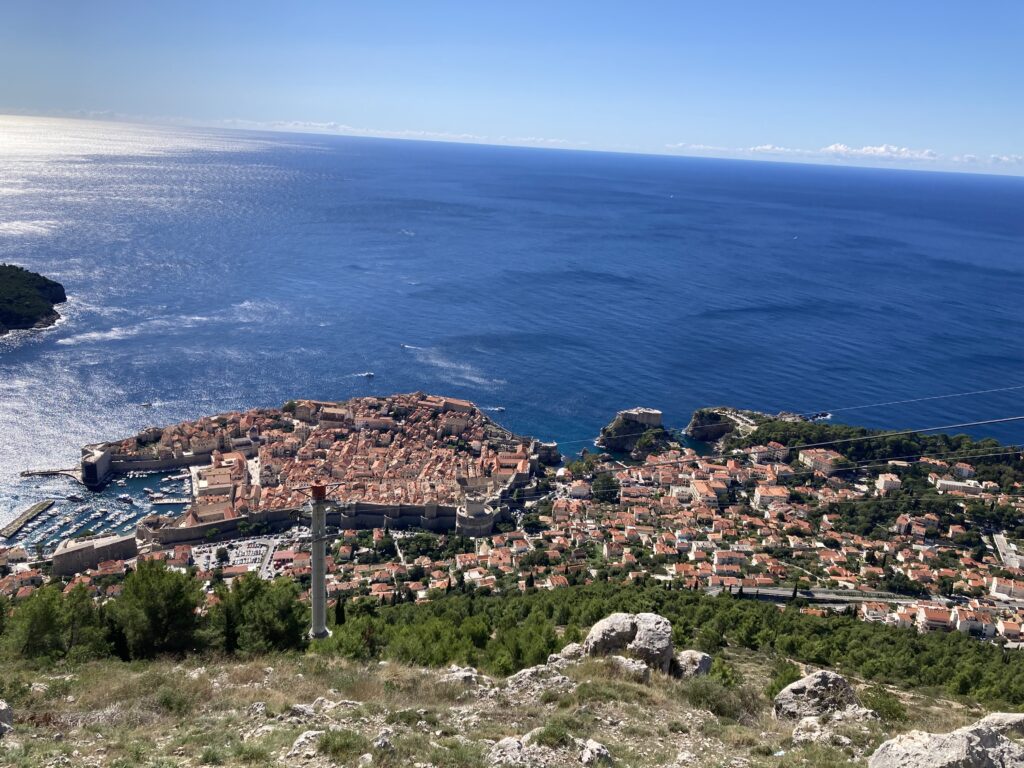
We were sitting on the deck of a cruise ship anchored at Dubrovnik, Croatia (pictured above), sipping a Kutjevo Grasevina. It was a pleasant, sunny day, the boat was gently rocking in the Adriatic waves, and the wine paired wonderfully with the local seafood we were munching. And I had no idea what I was drinking, much less how to pronounce it.
- The wine on our ship was complementary, with local wines curated by a sommelier. Yet, most passengers opted for familiar wines, missing out on a slice of Croatian culture. Croatians have been making wine for two thousand years, and they’re pretty good at it.
- When faced with wines from an unfamiliar region, the trick is to have someone knowledgeable guide you. Experienced waiters are often passionate about their local wines and will steer you in the right direction. Try one, and you may discover something new and interesting; you’ll certainly expand your wine knowledge.
- Anyway, to clear up the mystery, Kutjevo is a highly regarded winery; they’ve been in business since the 13th century. Grasevina is the most prestigious Croatian white grape. The Kutjevo was a refreshing dry white wine with crisp acidity and citrus and pear notes. Perfect for sipping on a sunny summer day. While hard to find, it’s carried periodically by various American wine shops, such as Total.

The ship moved on, and we made our way to Athens. Wine names don’t get much stranger than in Greece, particularly if the label is in the native language, with its unfamiliar alphabet. (Even the Greek street names are indecipherable). These wines are distinctive, which for some folk’s taste may not be a good thing. But we weren’t going to let a little thing like that deter us.
- Greece has an unsurpassed winemaking history: Greeks began making wine around 4,500 B.C. and developed many of the basic winemaking techniques that we still utilize today. They spread their wine culture throughout the Mediterranean, with the Romans and other western European cultures picking up the torch in later centuries.
- Greece – as was the case with many countries – had a stretch of pretty awful wines for a while, but Greek wines began a resurgence in the 1980s when a handful of winemakers from France and California recognized that they could make some pretty special wines there and brought their knowledge and money along. They were helped by some generous European Union subsidies.
- Greece has several hundred indigenous grapes that you won’t find elsewhere in the world, such as the red Agiorgitiko.
After tasting several Greek wines, we decided to feature a red wine that is readily available here in the U.S. -- a 2020 Driopi Neméa Agiorgitiko (about $25 retail). Driopi is one of the top producers in the Neméa appellation, located near the Corinthian Canal that separates the Peloponnese from the mainland. (The canal, pictured above, is about 10 feet wider than our ship, which made for an interesting transit.)
- Agiorgitiko is Greece’s most widely planted red grape, capable of a range of styles, from rosés to age-worthy dry reds. Due to its deep red color, it’s sometimes called the “Blood of Hercules.”
- The Driopi wine is intense, the sort of wine that you either like or hate. It has aromas of red fruit, earthiness, and spice. On the palate, it’s full-bodied, with sandy tannins, notes of raspberry and currant, spice, a hint of chocolate, and tartness. It has nice acidity and a pleasant medium finish. This is a wine that needs to be paired with an equally intense food, a grilled steak or meat with with a hearty red sauce would do nicely.
- We had a split decision on the Wine Concepts team, with one taster finding it too intense for her taste, and the second finding it pleasant and intriguing. In a world of homogeneous wines, it was fun to try something truly distinctive.
Cheers!
